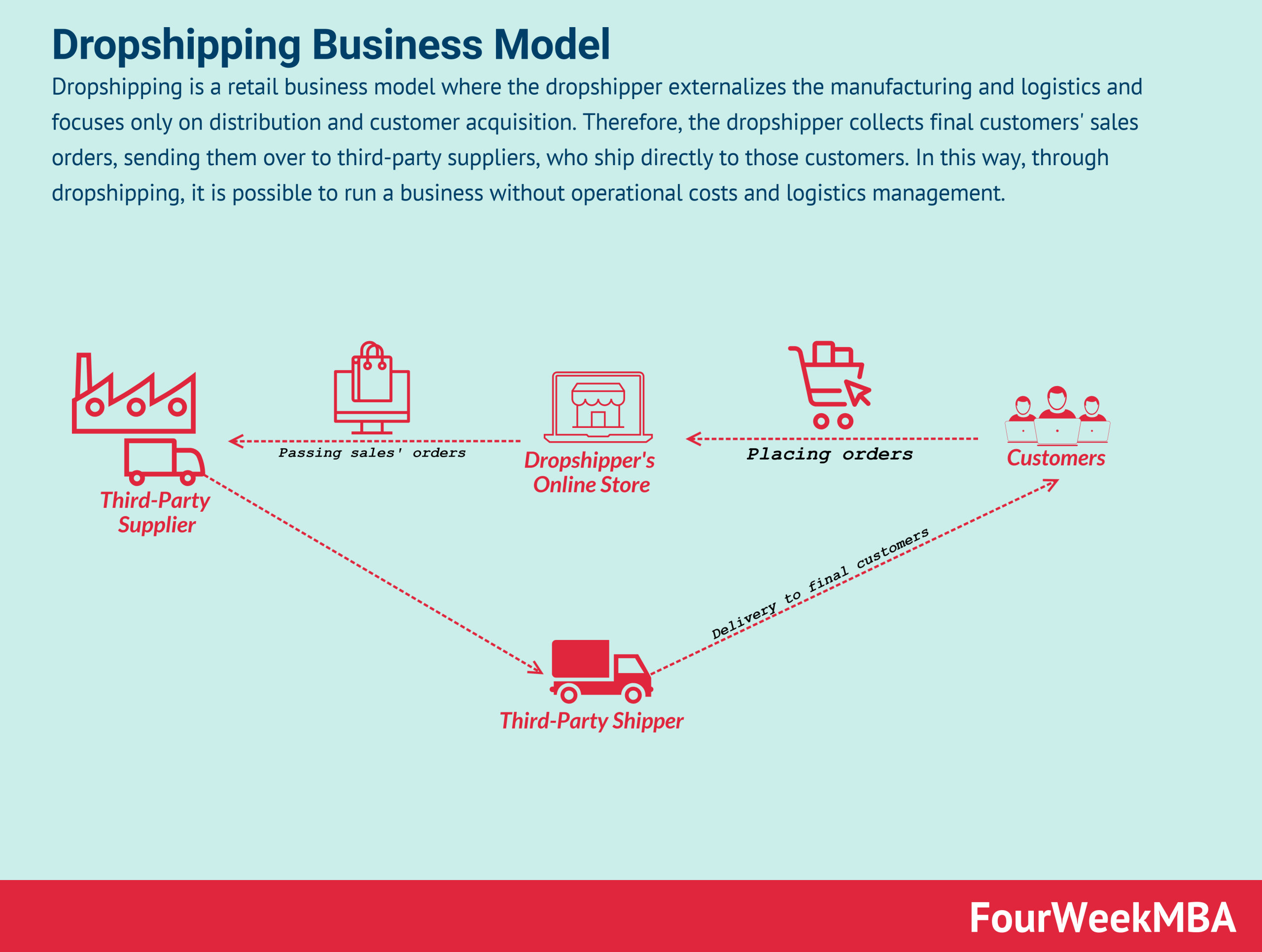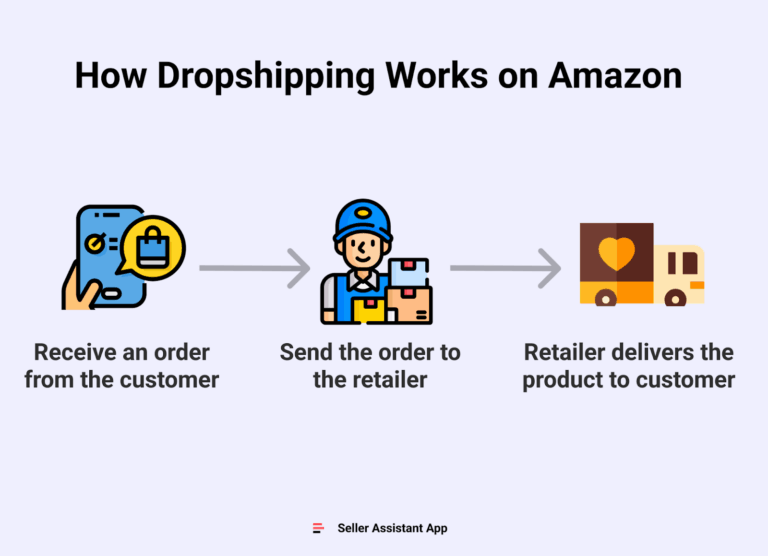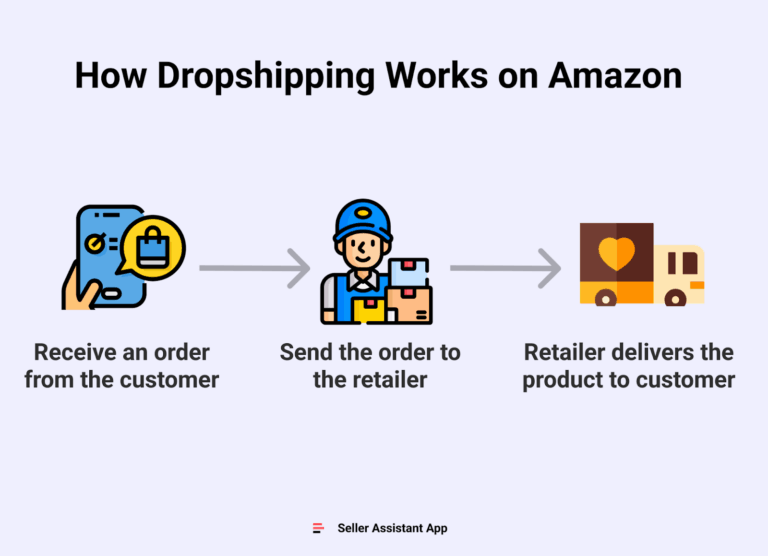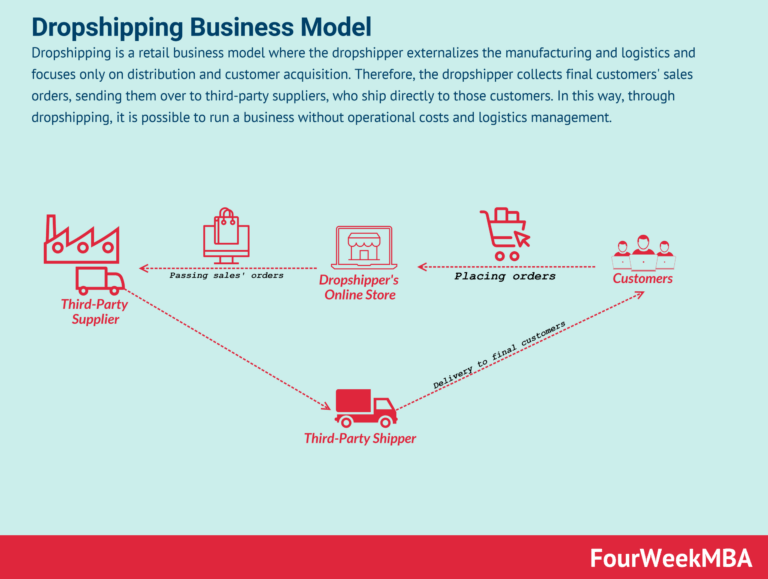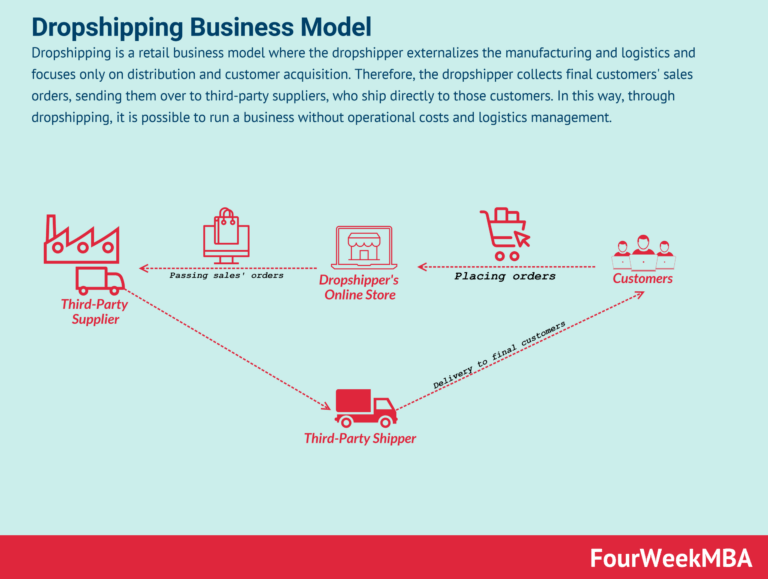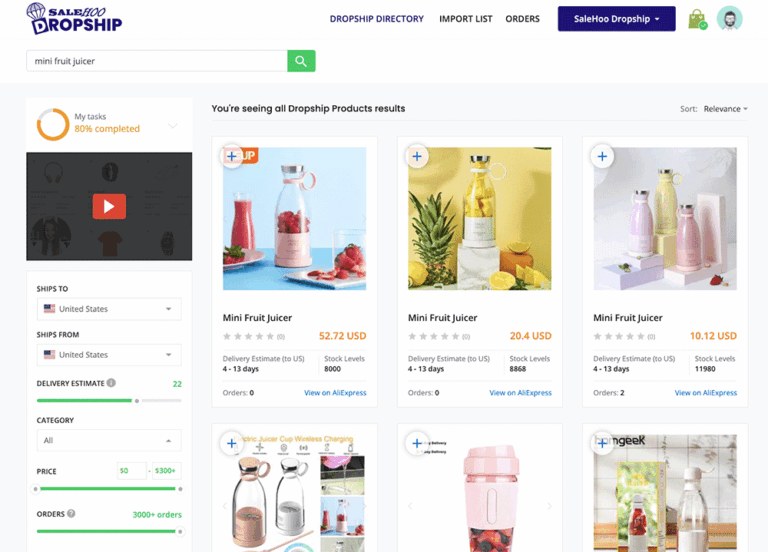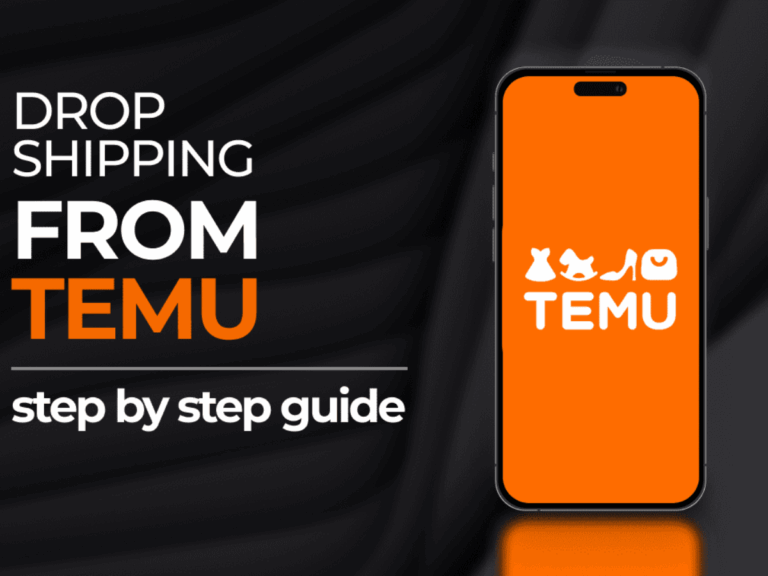The Ultimate Dropshipping Guide for Beginners (Wix Dropshipping)
Your Complete Guide to wix dropshipping
Starting your own business is an exciting journey, filled with possibilities and opportunities to shape your future. If you’re an aspiring entrepreneur, a beginner, or a small business owner eager to dive into the world of e-commerce, you’ve landed in the right place. In today’s digital landscape, dropshipping has emerged as a popular business model, allowing you to sell products online without the burden of inventory management or upfront costs.
What is Dropshipping?
Simply put, dropshipping is a retail fulfillment method where you don’t have to keep the products you sell in stock. Instead, when a customer makes a purchase on your online store, you forward the order to a third-party supplier who then ships the product directly to the customer. This means you can focus on marketing and growing your business while avoiding the complexities of inventory management, fulfillment, and shipping logistics.
Why Dropshipping is Appealing
The appeal of dropshipping lies in its low startup costs and flexibility. You can launch your online store with minimal investment, as you only purchase products after making a sale. This model allows you to test various products and markets without the financial risk of holding stock. Additionally, you can operate your business from anywhere, as long as you have an internet connection, making it a perfect fit for those looking for a flexible work-life balance.
What This Guide Covers
In this comprehensive guide to Wix dropshipping, we will walk you through every step of the process. You’ll learn how to:
- Set Up Your Wix Store: Discover how to create a visually appealing and user-friendly online store using Wix’s intuitive website builder.
- Source Products: Explore platforms like Modalyst to find high-quality dropshipping products that align with your niche.
- Optimize Your Store: Gain insights into effective marketing strategies, including SEO, social media engagement, and email marketing, to drive traffic to your store.
- Manage Orders: Understand the order fulfillment process and how to communicate effectively with your customers.
- Make Your First Sale: Learn tips and tricks to convert visitors into paying customers and achieve your first sale.
Turning Your Dream into Reality
Embarking on your dropshipping journey is not just about selling products; it’s about creating a business that reflects your passions and aspirations. By leveraging the tools and strategies outlined in this guide, you can turn your entrepreneurial dreams into a thriving reality. Remember, every successful business starts with a single step, and today is the perfect day to take yours!
What You’ll Learn In This Guide
- Your Complete Guide to wix dropshipping
- How Does Dropshipping Actually Work? A Step-by-Step Breakdown
- The Pros and Cons of Dropshipping: Is It Right for You?
- Step 1: Finding a Profitable Niche and Winning Products
- Step 2: Choosing the Right Dropshipping Suppliers
- Step 3: Building Your Online Store
- Step 4: Marketing Your Dropshipping Business to Get Sales
- Common Mistakes to Avoid as a Beginner
- Frequently Asked Questions (FAQs) about wix dropshipping
- Conclusion: Your Next Steps to Launching Your Business
- Important Disclaimer
How Does Dropshipping Actually Work? A Step-by-Step Breakdown
Understanding the Dropshipping Model: A Step-by-Step Breakdown
Dropshipping is a popular business model that allows you to run an online store without holding inventory. It’s an ideal solution for aspiring entrepreneurs and small business owners looking to minimize investment and maximize flexibility. Here’s how the dropshipping process works, broken down into clear steps:
- Customer Places an Order on Your Online Store
-
Imagine you have set up your online store using a platform like Wix. A customer browses through your website, selects a product they want to purchase, and places an order. This is the starting point of the dropshipping process. You act as the digital storefront, showcasing products and attracting customers.
-
You Receive the Payment
-
Once the customer completes their purchase, the payment is processed through your chosen payment gateway (like PayPal or credit card). The funds are transferred to your account, allowing you to retain the sales revenue. At this stage, you’ve made your first profit, but the real work is just beginning. This step is crucial because it establishes your role as the middleman in the transaction.
-
You Forward the Order to Your Supplier
-
After receiving the payment, it’s time to fulfill the order. You take the order details and forward them to your dropshipping supplier, who will handle the inventory and shipping. This can often be done automatically through integrations provided by platforms like Wix and Modalyst, streamlining the process. You’ll also need to pay the supplier for the product, which is usually at a wholesale price. This is where the flow of money shifts: you keep the difference between the retail price (what the customer paid) and the wholesale price (what you pay the supplier).
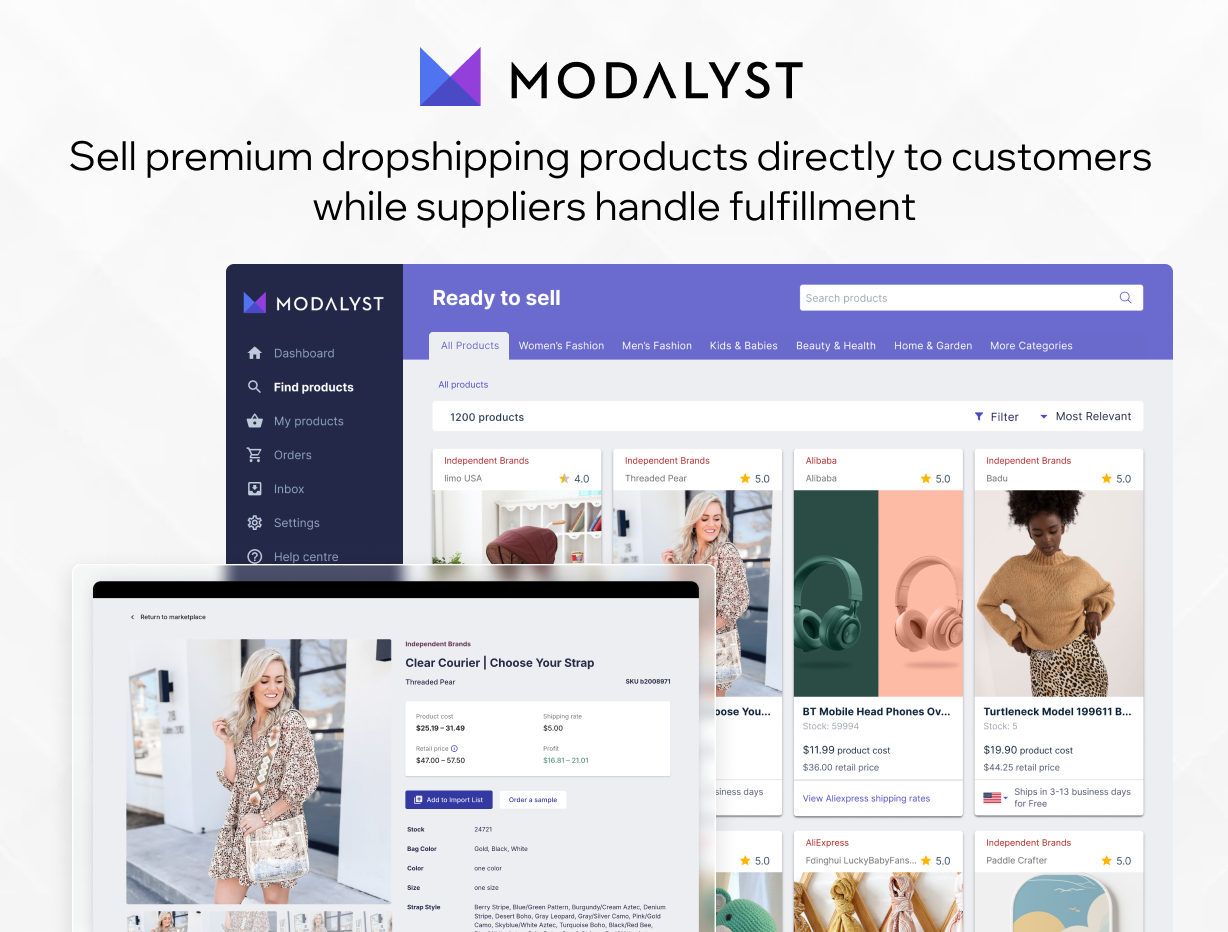
-
The Supplier Ships the Product Directly to the Customer
- The dropshipping supplier takes care of packaging and shipping the product directly to your customer’s address. This step is vital as it eliminates the need for you to manage inventory or handle logistics. Your role here is to ensure that the supplier has all the necessary information to fulfill the order correctly. Once the supplier ships the product, they often provide tracking information, which you can share with your customer to keep them informed.
Flow of Money and Goods
To illustrate the flow of money and goods in dropshipping, think of yourself as a restaurant owner. Customers order food (products) from your menu (online store). You don’t cook the food yourself; instead, you place an order with a kitchen (supplier) that prepares the meal and delivers it directly to the customer. You take the customer’s payment, pay the kitchen for the food, and keep the profit.
- Money Flow: Customer → You → Supplier
- Goods Flow: Supplier → Customer
Benefits of Dropshipping
This model offers several advantages:
– Low Initial Investment: You don’t need to purchase inventory upfront, minimizing financial risk.
– Flexibility: You can run your business from anywhere with an internet connection.
– Wide Product Range: Easily test new products without the commitment of holding stock.
Conclusion
By understanding these steps, you can effectively navigate the dropshipping landscape. Each phase of the process is designed to minimize your workload while maximizing your profit potential. Start with a user-friendly platform like Wix, connect with reliable suppliers, and watch your online business flourish without the burdens of traditional retail. Embrace the journey, and remember, every successful entrepreneur started with a single step!
The Pros and Cons of Dropshipping: Is It Right for You?
Advantages and Challenges of Dropshipping
| Advantages of Dropshipping (Pros) | Challenges of Dropshipping (Cons) |
|---|---|
| Low Financial Risk | Low Profit Margins |
| No need to invest in inventory upfront, minimizing losses. | Competition can drive prices down, resulting in lower margins. |
| Easy to Start | Inventory Management Issues |
| Quick setup with user-friendly platforms like Wix. | Reliance on suppliers can lead to stock shortages or delays. |
| Wide Product Selection | Shipping Complexities |
| Access to millions of products without holding inventory. | Managing shipping times and costs from multiple suppliers can be challenging. |
| Location Independence | Limited Control Over Branding |
| Operate your business from anywhere with internet access. | Products may not be customizable, limiting your brand identity. |
| Scalability | Customer Service Challenges |
| Easily scale your business as you grow without major overhead. | Handling returns, refunds, and customer inquiries can be difficult. |
| Built-in Marketing Tools | High Competition |
| Platforms like Wix offer integrated marketing features. | Many entrepreneurs are entering the dropshipping space, making it crowded. |
Key Advantages of Dropshipping
Low Financial Risk
One of the most significant advantages of dropshipping is the low financial risk associated with starting your business. Traditional retail models require substantial upfront investments in inventory, which can be a barrier for many aspiring entrepreneurs. With dropshipping, you only purchase products after you’ve made a sale, which means you won’t be stuck with unsold inventory. This model allows you to test different products and markets without committing a large sum of money upfront.
Easy to Start
Starting a dropshipping business is remarkably straightforward, especially with user-friendly platforms like Wix. You can create your online store quickly, utilizing customizable templates and built-in tools that streamline the process. This accessibility makes it an attractive option for beginners who may lack technical skills or experience in e-commerce.
Wide Product Selection
Dropshipping offers access to a vast array of products without the burden of managing inventory. With platforms like Modalyst integrated into Wix, you can source from millions of products, allowing you to cater to diverse customer preferences and trends. This flexibility means you can pivot your product offerings quickly based on market demand without incurring additional costs.
Key Challenges of Dropshipping
Low Profit Margins
While dropshipping allows for lower financial risk, it often comes with the drawback of low profit margins. Due to the competitive nature of the market, many dropshippers find themselves in price wars, driving down their profits. As a beginner, it’s essential to be aware that while you can generate sales, your margins might be thinner than expected, which can impact your overall business sustainability.
Inventory Management Issues
Another challenge in the dropshipping model is managing inventory effectively. Since you rely on suppliers to fulfill orders, you can face issues such as stock shortages or delays in shipping. This reliance can lead to poor customer experiences if products are out of stock or if shipping times are longer than expected. It’s crucial to establish strong relationships with reliable suppliers and to keep a close eye on inventory levels.
High Competition
The dropshipping market is highly saturated, with many new entrepreneurs entering the space. This high level of competition can make it difficult to stand out, especially in popular niches. To succeed, you must develop a unique value proposition and invest in marketing strategies that will help you reach your target audience effectively. This may include SEO, social media marketing, and influencer partnerships.
Conclusion
Dropshipping can be a viable and exciting way to start an online business, especially for beginners or those looking to minimize initial investment. However, it’s essential to weigh the advantages against the challenges to determine if it aligns with your entrepreneurial goals. By understanding the potential pitfalls and capitalizing on the benefits, you can position yourself for success in the competitive world of e-commerce. If you decide to embark on this journey, remain adaptable, prioritize customer service, and continuously seek out ways to differentiate your brand.
Step 1: Finding a Profitable Niche and Winning Products
What Makes a Good Niche?
When embarking on your dropshipping journey, choosing the right niche is crucial for your success. A good niche should have the following characteristics:
-
Passion and Interest: Ideally, you should have a genuine interest in the niche. This passion will not only keep you motivated during challenging times but will also resonate with your audience.
-
Market Demand: There should be a significant demand for products within your chosen niche. Use tools like Google Trends to gauge interest over time and ensure that the niche is not just a fleeting fad.
-
Competition Analysis: While some competition is healthy, overly saturated markets can be difficult to penetrate. Research existing players in your niche to identify gaps you can fill or unique angles you can approach.
-
Profit Margins: Look for niches where you can set a healthy markup. Ideally, the products you choose should allow for a profit margin of at least 20-50%. Analyze wholesale prices and compare them with retail pricing to calculate potential profits.
-
Target Audience: Define your target audience clearly. Understanding their demographics, preferences, and shopping behaviors will help you tailor your marketing strategies effectively.
-
Product Availability: Ensure that there are reliable suppliers who can provide quality products in your chosen niche. Check platforms like Modalyst, DSers, or AliExpress to see what’s available.
How to Brainstorm Niche Ideas
Brainstorming niche ideas can be a fun and creative process. Here are some effective methods to get your ideas flowing:
-
Personal Interests and Hobbies: Start by listing your interests, hobbies, and passions. Often, your personal experiences can lead to discovering a niche that you are excited about.
-
Problem-Solving Products: Think about common problems people face in their daily lives. Consider how you can offer solutions through specific products. For example, if you notice many people struggle with organization, you might explore storage solutions or planners.
-
Marketplaces and Trends: Explore online marketplaces like Amazon, Etsy, or eBay. Look at their best-seller lists to see what products are trending. Tools like Jungle Scout can help you analyze product performance and market trends.
-
Social Media and Forums: Platforms like Instagram, Pinterest, and Reddit can provide insight into trending topics and consumer interests. Join niche-specific forums or groups to engage with potential customers and understand their needs.
-
Keyword Research: Use keyword research tools like Ubersuggest or Google Keyword Planner to identify popular search terms related to your interests. High search volume with low competition can indicate a promising niche.
-
Competitor Analysis: Look at what successful competitors are doing. Analyze their product offerings, marketing strategies, and customer engagement. Identify gaps in their offerings that you could exploit.
Validating Your Niche
Once you have a niche idea, it’s essential to validate it before committing fully. Here are steps to ensure your niche is viable:
-
Conduct Market Research: Use surveys or polls to gather feedback from potential customers. Ask them about their pain points, preferences, and willingness to purchase products in your niche.
-
Analyze Competitors: Research your competitors’ strengths and weaknesses. Look at their product range, pricing strategies, customer service, and marketing efforts. This analysis can reveal opportunities for differentiation.
-
Test with Minimum Viable Products (MVP): Before launching a full-fledged store, consider testing the waters with a few products. Create a simple landing page or use social media ads to gauge interest and collect emails for future marketing.
-
Check Supplier Reliability: Contact potential suppliers to assess their responsiveness and reliability. Order sample products to evaluate quality firsthand. This step is crucial in ensuring you can deliver excellent customer experiences.
-
Evaluate Profitability: Calculate potential profits by considering all costs involved, including product pricing, shipping, and marketing expenses. Ensure your projected profits are sustainable.
-
Utilize Online Tools: Leverage tools like Google Trends, SEMrush, and Ahrefs to analyze search volumes and competition levels for keywords related to your niche. This data can help confirm the market’s interest.
Methods for Finding Winning Products
Finding winning products is a blend of creativity, research, and analysis. Here are proven methods to uncover products that will resonate with your audience:
-
Supplier Marketplaces: Utilize dropshipping platforms like Modalyst, DSers, or Spocket. These platforms often highlight trending products and offer insights into best-selling items.
-
Social Media Trends: Monitor platforms like Instagram, TikTok, and Pinterest for emerging trends. Hashtags can lead you to trending products and niches. Pay attention to viral content, as it often indicates consumer interest.
-
Product Criteria: When evaluating products, consider the following criteria:
- Price Point: Aim for products priced between $20 and $100, as this range is often conducive to impulse buying.
- Uniqueness: Look for products that are not easily found in local stores. Unique or niche products can draw more interest.
- Problem Solving: Products that solve specific problems tend to sell well. Consider how your product can make life easier for your customers.
-
Quality and Reviews: Choose products with positive reviews and high ratings. Quality assurance is crucial in building customer trust.
-
Seasonal Trends: Keep an eye on seasonal trends and holidays. Certain products may see spikes in demand during specific times of the year, such as holiday decorations or summer gear.
-
Influencer Partnerships: Collaborate with influencers in your niche to promote your products. Influencers can provide insights into what their audience is interested in, helping you identify potential winning products.
-
Customer Feedback: Once you launch, actively seek feedback from your customers. Their insights can guide you in refining your product offerings and identifying additional winning products.
Conclusion
Finding a profitable niche and winning products for your Wix dropshipping business involves a strategic approach. By understanding what makes a good niche, brainstorming ideas, validating them thoroughly, and employing effective product research methods, you’ll be well-equipped to launch a successful online store. Remember, the journey may have its ups and downs, but staying adaptable and responsive to market trends will set you apart as an entrepreneur. Start exploring today, and take the first step toward building your dream business!
Step 2: Choosing the Right Dropshipping Suppliers
Understanding the Importance of Reliable Dropshipping Suppliers
Choosing the right dropshipping suppliers is a critical step in establishing a successful online business. Your suppliers will directly impact product quality, shipping times, and customer satisfaction. Therefore, understanding how to find reliable suppliers is essential for maintaining a positive brand reputation and ensuring repeat business.
Here, we will explore three major platforms for finding dropshipping suppliers: AliExpress, CJ Dropshipping, and USA-Based Suppliers. Each has its unique advantages and disadvantages, which we will dissect to help you make an informed decision.
AliExpress
Overview
AliExpress is one of the largest online retail platforms, offering a vast array of products from suppliers around the world. It is especially popular among dropshippers due to its low prices and extensive product range.
Pros
– Vast Product Selection: With millions of products available, you can find almost anything to sell.
– Low Prices: Many products are available at competitive prices, allowing for higher profit margins.
– No Upfront Costs: You only pay for products after you make a sale, minimizing financial risk.
Cons
– Long Shipping Times: Many suppliers are based in China, leading to longer delivery times, which can affect customer satisfaction.
– Variable Quality: Product quality can vary significantly between suppliers, requiring careful selection and testing.
– Limited Supplier Communication: Some suppliers may not communicate effectively in English, making it difficult to resolve issues.
CJ Dropshipping
Overview
CJ Dropshipping is a platform that connects dropshippers with suppliers, offering a range of services including product sourcing, warehousing, and shipping. They focus on providing a more streamlined experience for dropshippers.
Pros
– Faster Shipping Options: CJ has warehouses in various locations, including the US and Europe, which can reduce shipping times significantly.
– Quality Control: CJ vets its suppliers, ensuring that you have access to reliable and high-quality products.
– Integrated Services: They offer additional services like branding, custom packaging, and print-on-demand.
Cons
– Higher Costs: While prices are competitive, they may be higher than AliExpress, especially for faster shipping options.
– Learning Curve: The platform may have a steeper learning curve compared to simpler platforms like AliExpress.
– Limited Product Range: While they have a good selection, it may not be as extensive as AliExpress.
USA-Based Suppliers
Overview
Choosing suppliers based in the USA can provide significant advantages in terms of shipping times and product quality. Many dropshippers prefer this option to enhance customer satisfaction.
Pros
– Fast Shipping: Domestic suppliers can offer significantly faster shipping times, leading to higher customer satisfaction and lower return rates.
– Better Communication: Working with US-based suppliers often means easier and clearer communication.
– Higher Product Quality: Many US suppliers maintain high-quality standards, reducing the risk of returns and refunds.
Cons
– Higher Prices: Products from US suppliers may come at a premium compared to overseas options.
– Limited Product Variety: The range of products may be narrower than what you can find on platforms like AliExpress.
– Inventory Issues: Some suppliers may not have the same level of inventory as larger overseas platforms, leading to potential stock shortages.
What to Look for in a Good Supplier
Finding a reliable dropshipping supplier is more than just picking a platform; it’s about evaluating specific criteria that can impact your business. Here’s a checklist to guide your search:
-
Communication: Assess the supplier’s responsiveness and willingness to communicate. Clear communication is essential for resolving issues and ensuring smooth operations.
-
Shipping Times: Check the average shipping times offered by the supplier. Fast shipping can enhance customer satisfaction and reduce refund requests.
-
Product Quality: Research product reviews and order samples to verify the quality of the products you plan to sell. Low-quality products can lead to high return rates.
-
Return Policies: Understand the supplier’s return and refund policies. A clear and fair return policy can save you time and hassle if issues arise.
-
Reliability and Reputation: Look for suppliers with a good track record. Read reviews and feedback from other dropshippers to gauge their reliability.
-
Pricing: Compare the prices offered by different suppliers. Ensure that you can maintain a healthy profit margin while staying competitive.
-
Integration Capabilities: Check if the supplier can easily integrate with your e-commerce platform (like Wix). Seamless integration can save you time and effort in managing your store.
-
Product Range: Evaluate the variety of products offered. A broader range allows you to cater to different customer needs and preferences.
Conclusion
Choosing the right dropshipping suppliers is a pivotal step toward building a successful online business. By weighing the pros and cons of platforms like AliExpress, CJ Dropshipping, and USA-Based Suppliers, you can make an informed decision that aligns with your business goals.
Use the checklist provided to assess potential suppliers and ensure they meet your specific needs. Remember, a reliable supplier can enhance your business reputation, improve customer satisfaction, and ultimately drive sales. With the right approach, you’ll be well on your way to creating a thriving dropshipping business on Wix.
Step 3: Building Your Online Store
Setting Up Your Online Store for Dropshipping
Building your online store is one of the most exciting steps in starting your dropshipping business. While there are several platforms available, Shopify stands out as the most popular choice due to its user-friendly interface and robust features. In this guide, we’ll walk you through the essential steps to set up your Shopify store for dropshipping success.
1. Choosing a Plan
Before diving into the design and setup of your store, you’ll need to select a Shopify plan that best fits your needs. Shopify offers several pricing tiers, including:
- Basic Shopify: Ideal for beginners, this plan provides all the essential tools to start your online business.
- Shopify: Offers additional features for growing businesses, including professional reports and more staff accounts.
- Advanced Shopify: Best for larger businesses that need advanced reporting and lower transaction fees.
Take advantage of Shopify’s free trial to explore the platform and its features. This will allow you to make an informed decision before committing to a paid plan.
2. Picking a Theme
Once you’ve chosen your plan, it’s time to select a theme for your store. Shopify offers a wide range of themes, both free and paid. Here’s how to choose the right one:
- Consider Your Niche: Choose a theme that aligns with your product offerings. For example, if you’re selling fashion items, look for a theme that showcases images effectively.
- Mobile Responsiveness: Ensure that the theme is mobile-friendly, as a significant amount of online shopping is done on mobile devices.
- Customization Options: Look for a theme that allows you to make changes without needing coding skills. This will help you create a unique look for your store.
To select a theme, navigate to the Shopify Theme Store, browse through the options, and preview them to see how they look in action.
3. Setting Up Essential Pages
Creating essential pages is crucial for building trust and providing important information to your customers. Here are the key pages you should include:
- About Us: Share your story, mission, and what sets your business apart. This helps customers connect with your brand.
- Contact: Provide multiple ways for customers to reach you, including a contact form, email address, and phone number if applicable.
- Policies: Clearly outline your store policies, including:
- Shipping Policy: Detail shipping times, costs, and any restrictions.
- Return Policy: Explain your return process and conditions.
- Privacy Policy: Inform customers about how you handle their personal information.
Having these pages in place not only enhances customer trust but also helps comply with legal requirements.
4. Installing Key Apps
To streamline your dropshipping operations, you’ll need to install some essential apps. Here are a few must-have tools:
- Product Import Tools: Apps like DSers or CJ Dropshipping are essential for importing products from suppliers to your store. These tools allow you to quickly add products, manage inventory, and fulfill orders seamlessly.
- SEO Optimization: Consider apps like SEO Manager to help optimize your store for search engines, improving your visibility and attracting organic traffic.
- Email Marketing: Tools like Klaviyo or Mailchimp can help you build and manage your email list, enabling you to engage with customers through newsletters and promotions.
To install an app, simply go to the Shopify App Store, search for the app you need, and follow the installation instructions.
5. Setting Up Payment Gateways
Enabling payment gateways is critical for processing transactions on your store. Shopify supports various payment methods, including:
- Shopify Payments: This is the easiest option to set up and integrates seamlessly with your store.
- PayPal: A trusted option for online shoppers, allowing them to pay using their PayPal accounts.
- Third-party gateways: Shopify supports many third-party payment processors like Stripe and Authorize.Net, giving you flexibility in payment options.
To set up payment gateways, navigate to your Shopify admin, click on “Settings,” then “Payments.” Follow the prompts to configure your chosen payment options.
Alternative Platforms
While Shopify is the leading platform for dropshipping, you might also consider WooCommerce as an alternative. WooCommerce is a WordPress plugin that turns your site into an e-commerce store. It offers more customization options and can be a cost-effective solution if you’re already familiar with WordPress. However, it may require more technical knowledge compared to Shopify.
Conclusion
Setting up your online store for dropshipping is an exciting step toward entrepreneurship. By following these actionable steps—choosing the right plan, selecting a suitable theme, creating essential pages, installing key apps, and setting up payment gateways—you’ll be well on your way to launching a successful dropshipping business. Remember, building a store is just the beginning; focus on marketing and customer engagement to drive traffic and sales. Good luck!
Step 4: Marketing Your Dropshipping Business to Get Sales
Social Media Marketing (TikTok & Instagram)
Social media platforms like TikTok and Instagram are powerful tools for marketing your dropshipping business. They allow you to engage directly with your target audience and showcase your products in creative ways. Here are some actionable strategies to make the most out of these platforms:
- Create Engaging Content
- Tip: Use high-quality images and videos to showcase your products. For instance, if you’re selling fashion items, create short styling videos or transformation clips.
-
Example: A dropshipping store selling trendy clothing can create a series of TikTok videos featuring different ways to style a particular item. Use popular music and trending hashtags to increase visibility.
-
Utilize Stories and Reels
- Tip: Leverage Instagram Stories and Reels to share behind-the-scenes content, product launches, and customer testimonials.
-
Example: Post a Reel showing the unboxing of a new product line. Use polls in Stories to engage your audience by asking them which product they like best.
-
Collaborate with Influencers
- Tip: Partner with influencers in your niche to reach a wider audience. Look for micro-influencers who have a loyal following.
-
Example: If you sell eco-friendly products, collaborate with an influencer who focuses on sustainability. They can create content featuring your products, driving traffic to your store.
-
Run Contests and Giveaways
- Tip: Organize contests or giveaways to increase engagement and attract new followers. Make sure to encourage participants to share your post and tag friends.
-
Example: Offer a free product to a random winner who follows your account, likes the post, and tags three friends. This can help boost your visibility significantly.
-
Use Hashtags Wisely
- Tip: Research and use relevant hashtags to increase your content’s discoverability. Mix popular hashtags with niche-specific ones.
- Example: If your dropshipping store sells fitness gear, use hashtags like #FitnessGoals, #HomeWorkout, and #FitnessMotivation to target your audience effectively.
Paid Advertising (Facebook/Instagram Ads)
Paid advertising can significantly accelerate the growth of your dropshipping business. Platforms like Facebook and Instagram allow for targeted ads that can reach your ideal customers. Here’s how to get started:
- Define Your Target Audience
- Tip: Use Facebook’s Audience Insights to determine the demographics, interests, and behaviors of your target market.
-
Example: If you’re selling pet supplies, target audiences that include pet owners, animal lovers, and related interests.
-
Create Compelling Ad Copy
- Tip: Write clear, persuasive ad copy that highlights the benefits of your products. Use strong calls to action (CTAs).
-
Example: Instead of simply saying “Buy Now,” use “Transform Your Home Today—Shop Our Unique Decor Collection!”
-
Utilize Eye-Catching Visuals
- Tip: Use high-quality images or videos that grab attention. Experiment with carousel ads to showcase multiple products.
-
Example: For a beauty product store, create a video ad demonstrating how to use the product, showcasing before-and-after results.
-
A/B Testing
- Tip: Run A/B tests on different ad elements—headlines, images, and CTAs—to see what resonates best with your audience.
-
Example: Test two versions of an ad: one with a discount offer and another highlighting a limited-time free shipping deal. Analyze which performs better.
-
Monitor and Optimize Your Ads
- Tip: Regularly check your ad performance metrics (CTR, conversions, etc.) and adjust your campaigns accordingly.
- Example: If an ad is underperforming, consider changing the target audience or tweaking the ad copy to better suit your audience’s interests.
Search Engine Optimization (SEO)
SEO is crucial for driving organic traffic to your dropshipping store. By optimizing your website, you can improve your rankings on search engines like Google. Here are key strategies to implement:
- Keyword Research
- Tip: Use tools like Google Keyword Planner or Ubersuggest to find relevant keywords for your niche. Focus on long-tail keywords for better targeting.
-
Example: If you sell kitchen gadgets, target keywords like “best kitchen gadgets for home cooks” instead of just “kitchen gadgets.”
-
Optimize Product Descriptions
- Tip: Write unique product descriptions that include your target keywords. Avoid copying manufacturer descriptions.
-
Example: Instead of a generic description, write: “Discover our versatile avocado slicer, perfect for healthy meal prep. Enjoy perfectly sliced avocados every time!”
-
Improve Website Load Speed
- Tip: Ensure your website loads quickly, as page speed affects SEO rankings and user experience. Use tools like Google PageSpeed Insights to analyze and improve your site.
-
Example: Compress images and minimize code to improve loading times, ensuring visitors don’t leave due to slow performance.
-
Build Quality Backlinks
- Tip: Reach out to bloggers or websites in your niche for guest posting opportunities or collaborations that can lead to backlinks to your store.
-
Example: If you sell outdoor gear, collaborate with a travel blog to provide content in exchange for a link back to your product pages.
-
Create Valuable Content
- Tip: Start a blog on your dropshipping site to share tips, product reviews, or industry news, incorporating your keywords naturally.
- Example: If your store focuses on fitness products, write articles about workout tips, healthy recipes, or product comparisons to attract traffic.
Email Marketing
Email marketing remains one of the most effective ways to engage customers and drive sales. Here’s how to set up a successful email marketing strategy:
- Build Your Email List
- Tip: Use pop-up forms on your website to encourage visitors to sign up for your newsletter. Offer a discount or freebie as an incentive.
-
Example: “Subscribe now and get 10% off your first order!” can be an effective way to capture emails.
-
Segment Your Audience
- Tip: Segment your email list based on customer behavior, preferences, and purchase history to send targeted campaigns.
-
Example: Create a segment for customers who have purchased from you before and send them exclusive offers on new arrivals.
-
Craft Compelling Subject Lines
- Tip: Use catchy and personalized subject lines to increase open rates. A/B test different subject lines to find what works best.
-
Example: Instead of “New Products Available,” try “You’re Going to Love Our New Arrivals!” for a more engaging approach.
-
Provide Valuable Content
- Tip: Don’t just sell in your emails. Share valuable content, such as tips, how-tos, or industry news that aligns with your products.
-
Example: If you sell fitness equipment, send workout tips or healthy recipes in your newsletters, positioning your brand as an authority.
-
Monitor and Analyze Performance
- Tip: Use analytics tools to track open rates, click-through rates, and conversions. Adjust your strategy based on what the data shows.
- Example: If you notice high open rates but low click-through rates, consider revising your email content or CTAs to be more compelling.
By implementing these marketing strategies, you’ll be well on your way to attracting customers and driving sales for your dropshipping business. Remember, consistency is key, so keep experimenting and refining your approach as you learn what resonates best with your audience. Good luck!
Common Mistakes to Avoid as a Beginner
1. Choosing a Bad Niche
One of the most critical mistakes beginners make is selecting a niche that is either overly saturated or not in demand. A poorly chosen niche can lead to minimal sales and wasted effort.
Solution: Research your niche thoroughly before committing. Use tools like Google Trends, social media insights, and keyword research tools to gauge demand. Look for niches that have a balance of popularity and manageable competition. Ideally, find a niche that you are passionate about, as it will keep you motivated.
2. Not Testing Products
Many new dropshippers make the error of adding numerous products to their store without testing their quality or market viability. This can lead to customer dissatisfaction and returns.
Solution: Always order samples of products you intend to sell. This allows you to check the quality and ensure it meets your standards. Additionally, consider using a small test campaign to gauge customer interest before fully committing to a product line. If a product doesn’t perform well, don’t hesitate to remove it from your offerings.
3. Poor Customer Service
Customer service can make or break your online business. Beginners often underestimate its importance and may not respond promptly to inquiries or complaints.
Solution: Establish clear communication channels and set expectations for response times. Consider using chatbots for immediate responses and be proactive in addressing customer inquiries. Building a strong customer service framework will enhance customer trust and loyalty, encouraging repeat business.
4. Ignoring Shipping Times
In the dropshipping model, shipping times can vary significantly based on suppliers. Many beginners overlook this aspect, leading to frustrated customers.
Solution: Always be transparent about shipping times on your website. Partner with suppliers who can provide quick shipping options, especially if you are targeting local markets. Consider offering multiple shipping options to cater to different customer needs. Keeping customers informed about their order status can also mitigate dissatisfaction.
5. Unrealistic Profit Expectations
New dropshippers often have inflated expectations about profits, thinking they can make quick money without significant effort. This mindset can lead to disappointment and frustration.
Solution: Set realistic profit margins and understand the costs involved in running your dropshipping business. Factor in costs such as advertising, platform fees, and shipping when calculating your potential profits. Educate yourself about the dropshipping business model and remember that building a successful business takes time and persistence.
6. Neglecting Marketing
Many beginners believe that simply having a website will attract customers. This misconception can lead to poor visibility and low sales.
Solution: Develop a comprehensive marketing strategy that includes search engine optimization (SEO), social media marketing, email campaigns, and pay-per-click advertising. Utilize Wix’s built-in marketing tools to enhance your visibility and reach potential customers. Regularly analyze your marketing efforts and adjust your strategies based on performance data.
7. Overcomplicating Your Website
Some beginners get caught up in creating a complex website with too many features, which can confuse potential customers and hinder their shopping experience.
Solution: Keep your website design simple, user-friendly, and focused on conversion. Use Wix’s customizable templates to create a professional look that is easy to navigate. Ensure your checkout process is streamlined, as a complicated checkout can lead to cart abandonment.
8. Failing to Build a Brand
In a competitive market, failing to establish a unique brand identity can make it difficult for your store to stand out. Many beginners focus solely on product offerings without considering branding.
Solution: Invest time in developing a strong brand identity, including a memorable logo, consistent color scheme, and a clear value proposition. Use storytelling to connect with your audience and convey what makes your brand unique. A strong brand presence can significantly enhance customer loyalty.
9. Not Utilizing Analytics
Beginners often overlook the importance of tracking their store’s performance and customer behavior. Without analytics, it’s challenging to identify what’s working and what isn’t.
Solution: Use tools like Google Analytics or Wix’s built-in analytics to track your website’s performance. Monitor metrics such as traffic sources, conversion rates, and customer behavior. This data will help you make informed decisions and optimize your store for better results.
10. Avoiding Continuous Learning
The e-commerce landscape is constantly evolving, and beginners may fall into the trap of thinking they know enough to succeed. This mindset can lead to stagnation and missed opportunities.
Solution: Commit to lifelong learning by staying updated on industry trends, attending webinars, and reading relevant articles. Engage with other dropshippers and entrepreneurs to share experiences and insights. Adapting to changes and continuously improving your skills will position you for long-term success in the dropshipping business.
By being aware of these common pitfalls and implementing effective strategies, you can set yourself up for a successful dropshipping venture on Wix. Remember, every mistake is an opportunity to learn and grow!
Frequently Asked Questions (FAQs) about wix dropshipping
1. What is dropshipping, and how does it work with Wix?
Dropshipping is a retail fulfillment method where you, as the store owner, don’t keep products in stock. Instead, when a customer purchases a product from your Wix store, you buy the item from a third-party supplier who then ships it directly to your customer. With Wix, you can integrate with platforms like Modalyst, which offers a vast selection of products, allowing you to manage your store without the hassle of inventory and shipping.
2. How much does it cost to start a dropshipping business on Wix?
Starting a dropshipping business on Wix is low-cost. You can create your website for free during the initial trial period. However, to start selling and accept payments, you’ll need to upgrade to a Wix Premium plan, which starts at a nominal monthly fee. Importantly, you won’t pay for any products until you make a sale, minimizing your upfront investment.
3. Do I need to register my business to start dropshipping?
While it’s not strictly necessary to register your business to start dropshipping, it’s highly recommended. Registering can provide you with legal protections, help you establish credibility, and may be required for tax purposes. Research local regulations regarding business licenses and permits to ensure compliance.
4. How do I find reliable dropshipping suppliers?
Finding reliable suppliers is crucial for your dropshipping success. On Wix, you can connect with Modalyst, which features vetted suppliers with quality products. Additionally, research suppliers on platforms like DSers or Sprocket, check reviews, order samples to evaluate product quality, and ensure they have quick shipping times to enhance customer satisfaction.
5. How do I handle returns and refunds in a dropshipping business?
Handling returns in a dropshipping business can be tricky since you don’t physically handle the products. Generally, the return policy should be outlined on your website. Coordinate with your supplier to understand their return policies, and communicate clearly with your customers about how returns will be processed. It’s important to be transparent and responsive to maintain customer trust.
6. What marketing strategies should I use to promote my Wix dropshipping store?
Effective marketing strategies include leveraging social media platforms (like Instagram and Facebook) to showcase your products, utilizing SEO to improve your site’s visibility, and implementing email marketing to keep customers engaged. Additionally, consider using pay-per-click advertising and collaborating with influencers to reach a wider audience.
7. How can I choose the right products to sell in my dropshipping store?
Selecting the right products involves researching market trends and customer preferences. Use tools like Google Trends to identify popular items. Additionally, explore the Modalyst marketplace for trending products, and consider your niche to find items that resonate with your target audience. Testing different products can help you determine what sells best.
8. Can I customize the design of my dropshipping website on Wix?
Absolutely! Wix offers over 120 customizable templates and a user-friendly drag-and-drop editor. You can create a unique storefront that reflects your brand by adjusting layouts, colors, and images without needing any coding skills. This customization helps establish trust and a professional appearance for your store.
9. How do I manage orders and track fulfillment with Wix?
Wix provides an intuitive dashboard to manage your orders easily. Once a customer places an order, you can view and track the fulfillment status directly from your dashboard. Automated updates can be sent to customers about their order status, keeping them informed and enhancing their shopping experience.
10. What are the advantages of using Wix for dropshipping?
Wix is an excellent platform for dropshipping because it combines an easy-to-use website builder with access to high-quality suppliers through Modalyst. You benefit from professional design options, built-in marketing tools, and the ability to manage multiple sales channels—all in one place. This makes it a great choice for beginners looking to start an online business with minimal investment and risk.
Conclusion: Your Next Steps to Launching Your Business
Summary of Key Steps to Get Started
As you embark on your dropshipping journey with Wix, it’s essential to follow a structured approach to set yourself up for success. Here’s a concise roadmap:
-
Choose Your Niche: Identify a product category that aligns with your interests and has market demand. Research trends and customer preferences to ensure you’re targeting the right audience.
-
Create Your Wix Store: Utilize Wix’s user-friendly website builder to design a visually appealing online store. Choose from over 120 customizable templates that reflect your brand’s identity.
-
Integrate with Modalyst: Connect your Wix store to Modalyst or another reliable dropshipping platform. This will give you access to a wide range of high-quality products and suppliers.
-
Set Pricing and Shipping Policies: Determine your pricing strategy and set clear shipping options. Ensure your policies are competitive to attract and retain customers.
-
Implement Marketing Strategies: Use Wix’s built-in marketing tools to optimize your site for SEO, create compelling social media campaigns, and engage customers through email marketing.
-
Launch and Monitor: Once everything is set, launch your store! Keep an eye on your analytics to understand customer behavior and make data-driven decisions for improvement.
A Real Business, Not a Quick Fix
Remember, dropshipping is not a get-rich-quick scheme. It requires dedication, ongoing learning, and continuous effort to build and scale your business. Embrace the challenges as opportunities for growth, and don’t hesitate to seek out resources and communities for support.
Take the First Step Today!
The journey of a thousand miles begins with a single step. Today, that step is within your reach. Dive into the world of dropshipping, harness the power of Wix, and transform your entrepreneurial dreams into reality. Start creating your store now and pave the way for your future success!
Important Disclaimer
⚠️ Important Disclaimer
The information provided in this guide is for educational purposes only. Starting a business involves risks, and success is not guaranteed. Please conduct your own thorough research and consider consulting with financial and legal professionals before making any business decisions.
